Abstract
Low birthweight infants aged 4-41 days were given from birth one of three experimental milk formulae varying widely in content of calcium and phosphate. Ca and P in feed, urine, and faeces were measured between carmine markers corresponding to a metabolic period of 48 hours. Calcium enriched in 46Ca to provide a marker for the dietary Ca was added to one feed and 46Ca measured in urine and faeces. True absorption of Ca and endogenous excretion into the bowel could then be inferred. True absorption of Ca was proportional to Ca intake and independent of P intake. Endogenous faecal excretion seemed to be independent of both Ca P intakes, and varied widely between different infants in the range 4-150 mg/day. Urine Ca was low and retention was essentially the difference between true absorption and endogenous faecal excretion. Retention of Ca tended to be much greater on a high Ca intake, but the variability in retention between infants on a given intake was large, paralleling the variability in endogenous faecal excretion. The variability in plasma Ca concentrations in newborn infants may in part be a consequence of wide individual variability in endogenous faecal excretion. The 46Ca marker technique provides a means of investigating the factors determining this variability.
Full text
PDF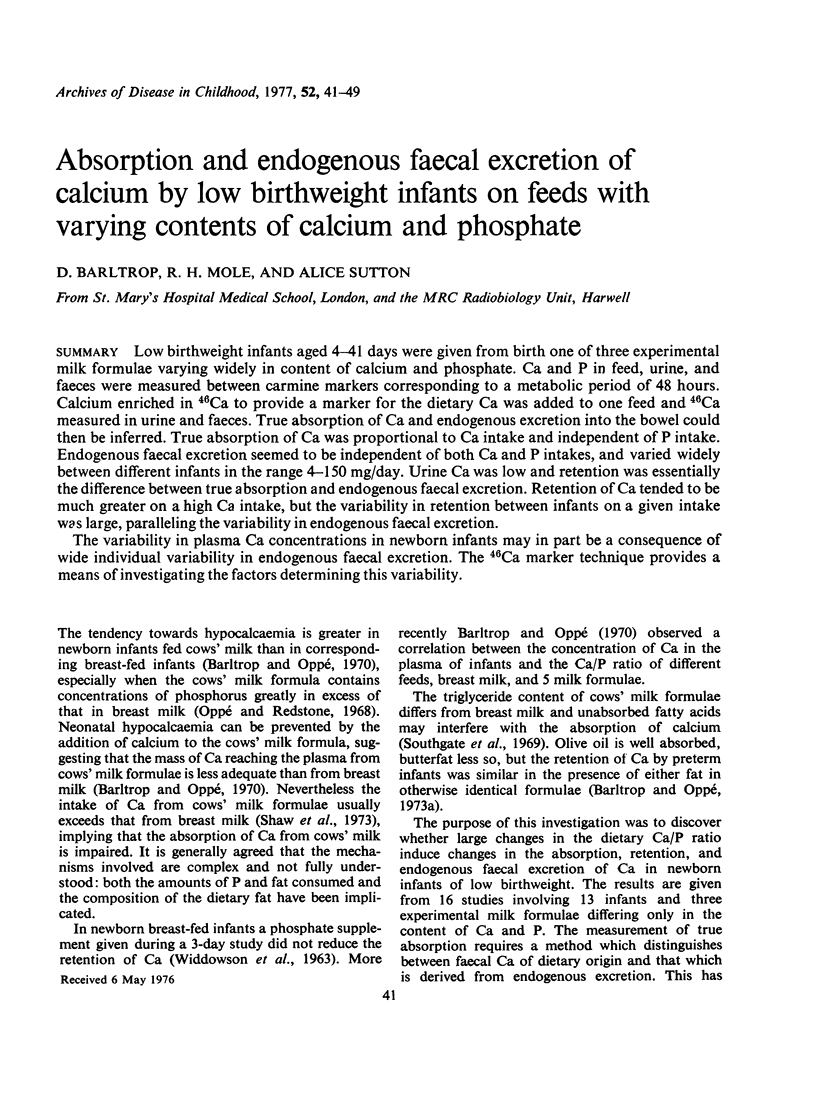
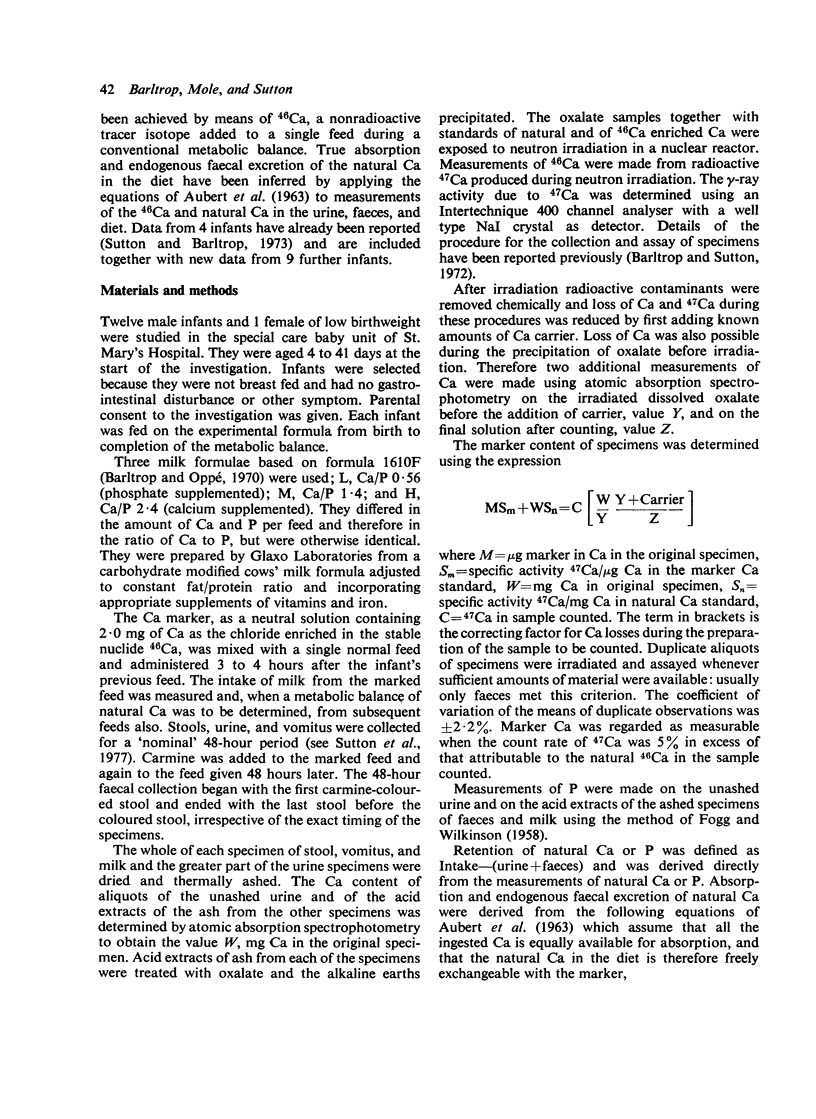
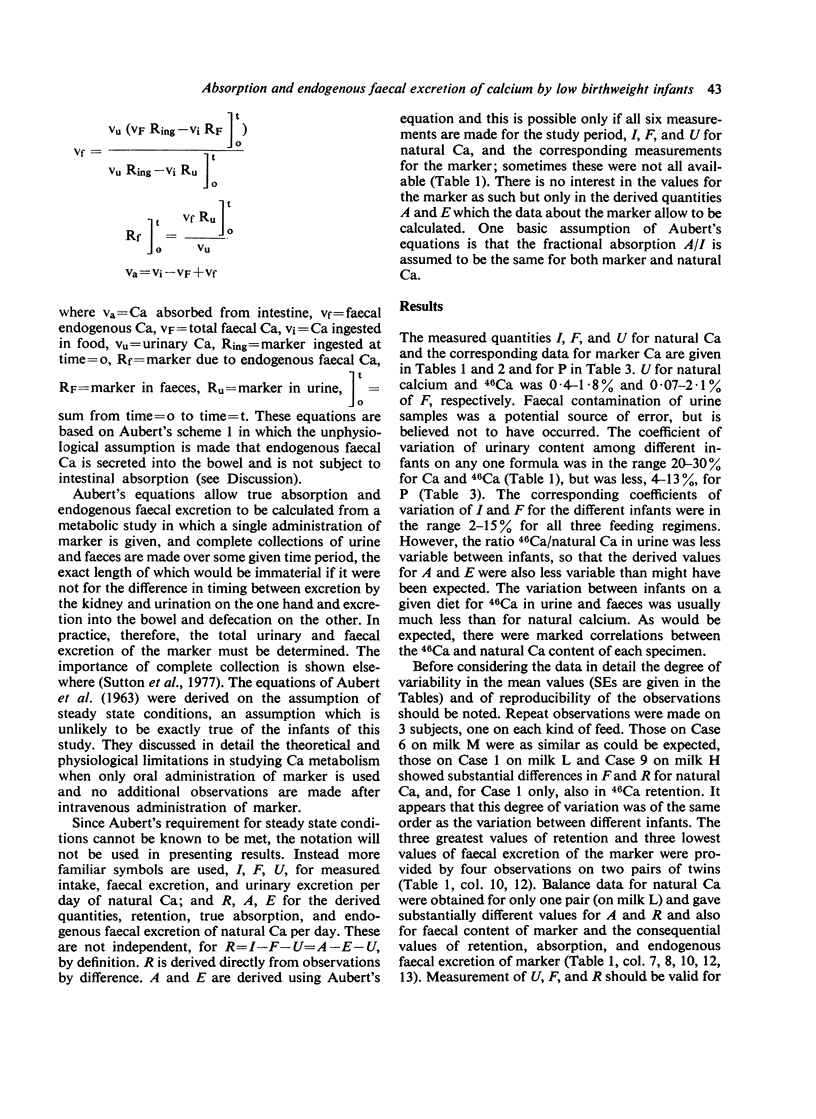

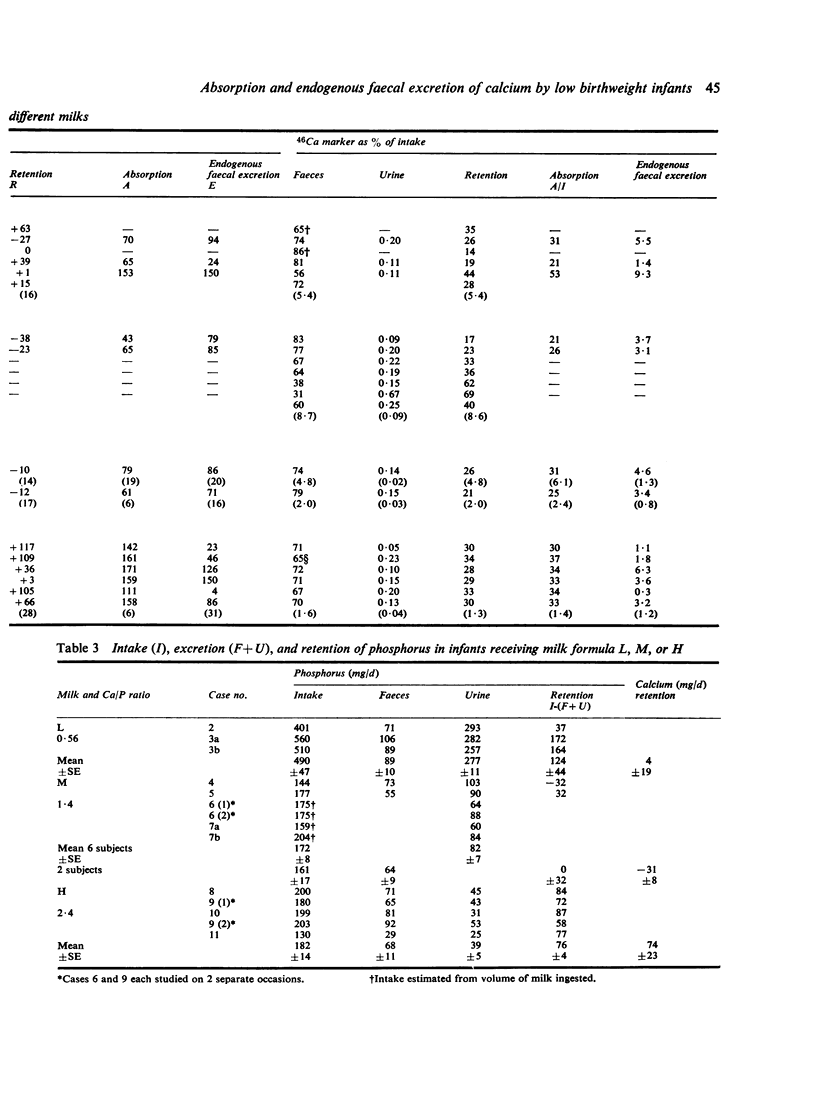
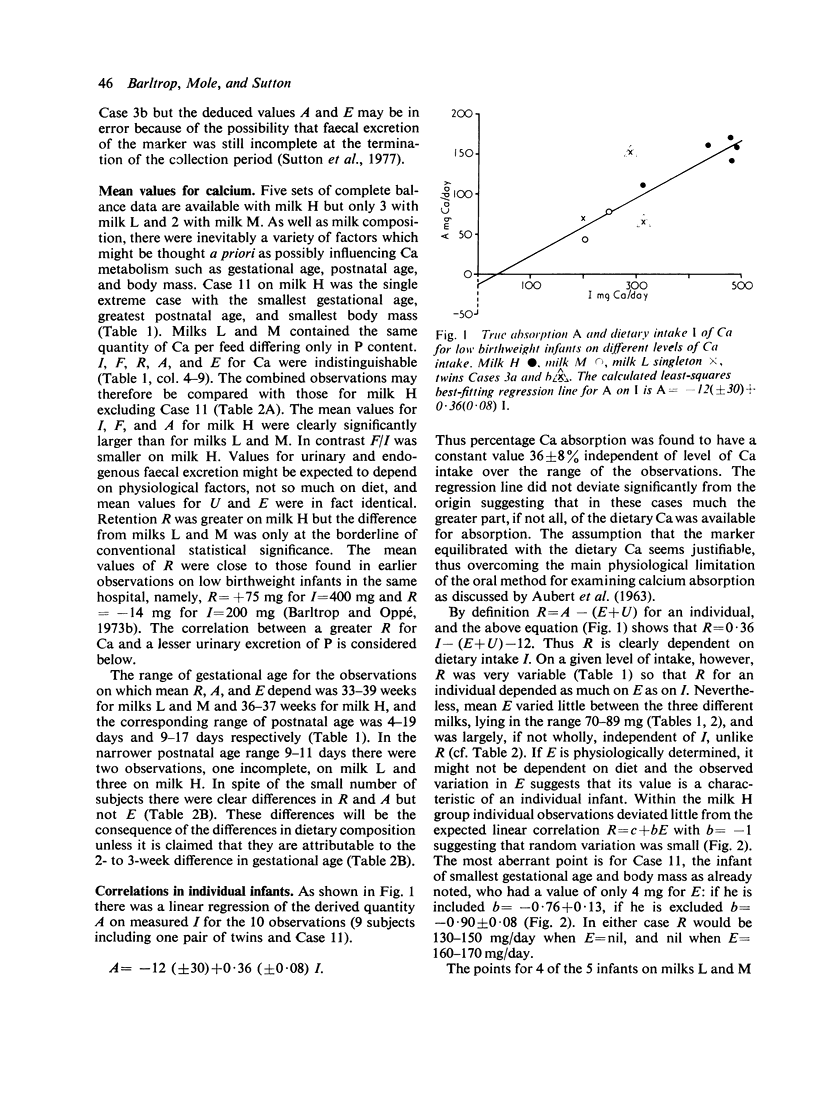
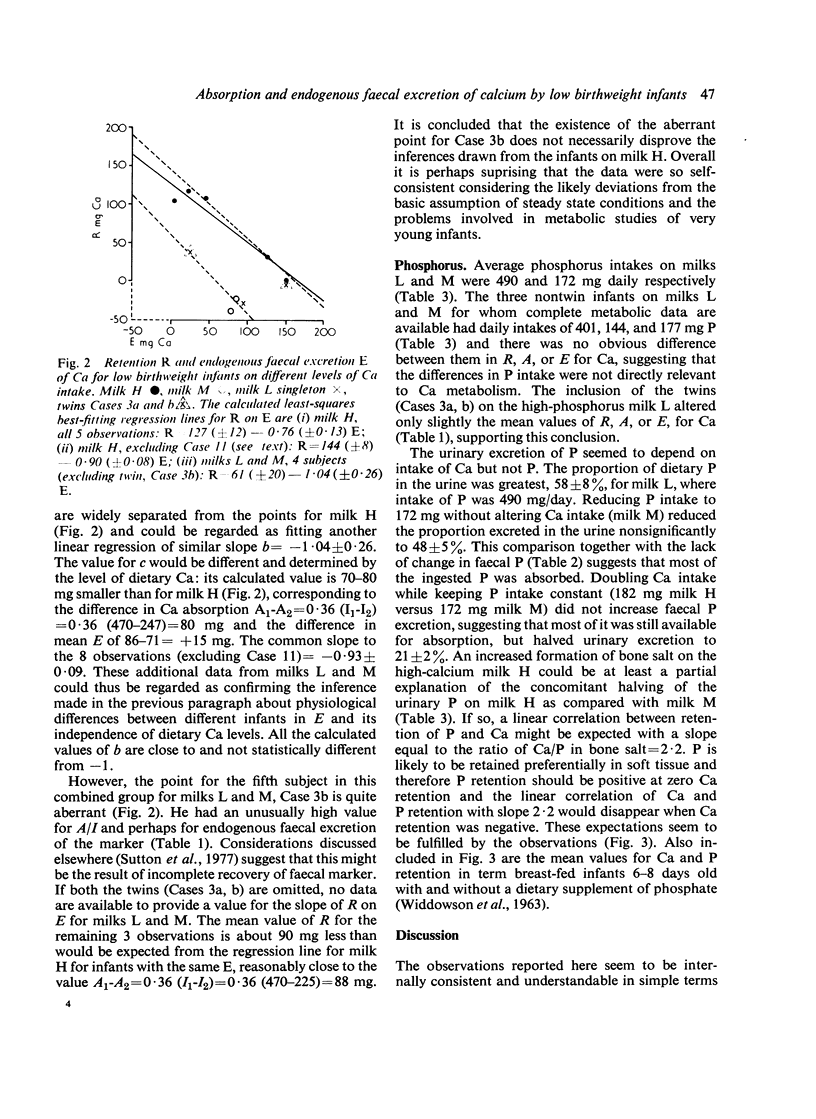
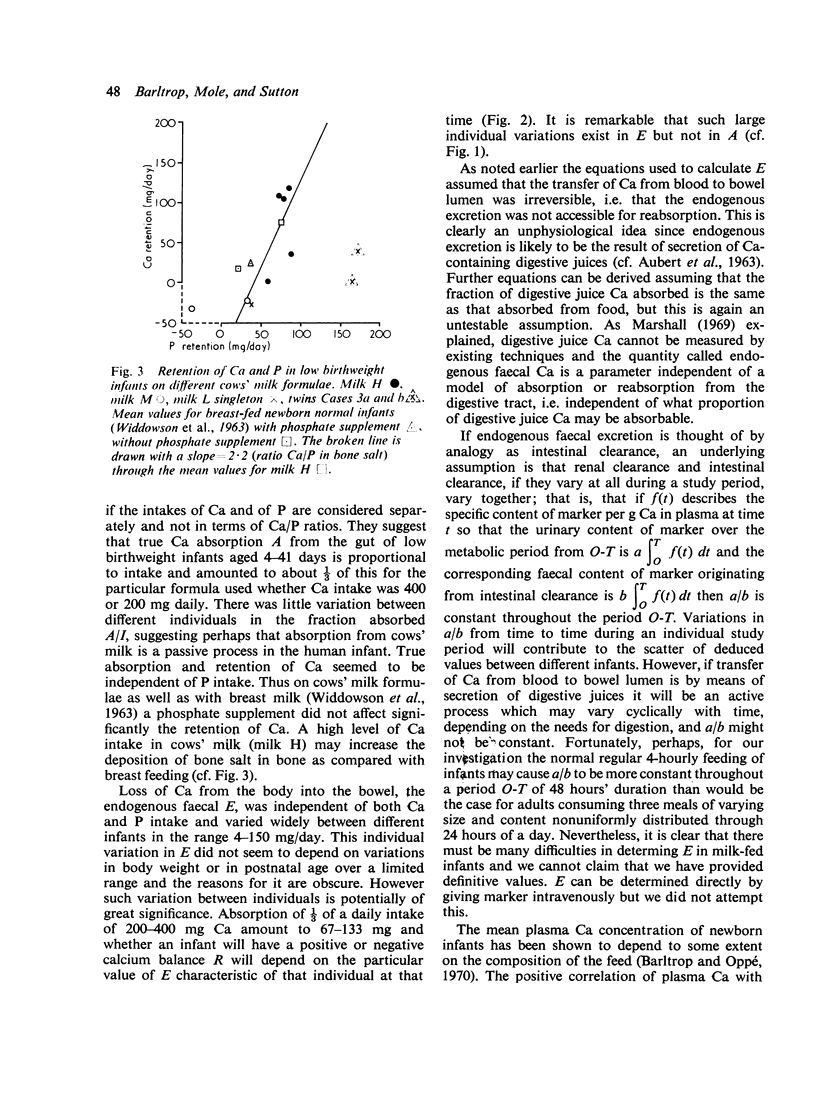
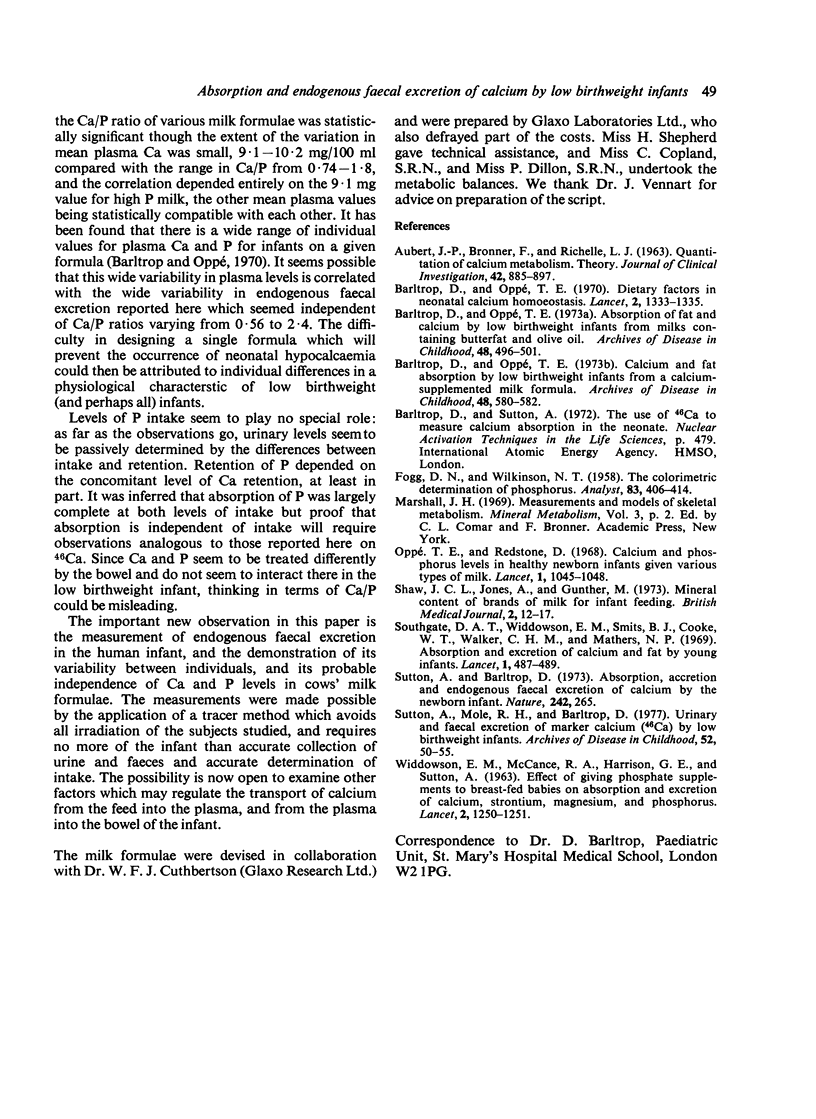
Selected References
These references are in PubMed. This may not be the complete list of references from this article.
- AUBERT J. P., BRONNER F., RICHELLE L. J. Quantitation of calcium metabolism. Theory. J Clin Invest. 1963 Jun;42:885–897. doi: 10.1172/JCI104781. [DOI] [PMC free article] [PubMed] [Google Scholar]
- Barltrop D., Oppé T. E. Dietary factors in neonatal calcium homoeostasis. Lancet. 1970 Dec 26;2(7687):1333–1335. doi: 10.1016/s0140-6736(70)92359-7. [DOI] [PubMed] [Google Scholar]
- Oppé T. E., Redstone D. Calcium and phosphorus levels in healthy newborn infants given various types of milk. Lancet. 1968 May 18;1(7551):1045–1048. doi: 10.1016/s0140-6736(68)91407-4. [DOI] [PubMed] [Google Scholar]
- Shaw J. C., Jones A., Gunther M. Mineral content of brands of milk for infant feeding. Br Med J. 1973 Apr 7;2(5857):12–15. doi: 10.1136/bmj.2.5857.12. [DOI] [PMC free article] [PubMed] [Google Scholar]
- Southgate D. A., Widdowson E. M., Smits B. J., Cooke W. T., Walker C. H., Mathers N. P. Absorption and excretion of calcium and fat by young infants. Lancet. 1969 Mar 8;1(7593):487–489. doi: 10.1016/s0140-6736(69)91589-x. [DOI] [PubMed] [Google Scholar]
- Sutton A., Barltrop D. Absorption, accretion and endogenous faecal excretion of calcium by the newborn infant. Nature. 1973 Mar 23;242(5395):265–265. doi: 10.1038/242265a0. [DOI] [PubMed] [Google Scholar]
- Sutton A., Mole R. H., Barltrop D. Urinary and faecal excretion of marker calcium (46Ca) by low birthweight infants. Arch Dis Child. 1977 Jan;52(1):50–55. doi: 10.1136/adc.52.1.50. [DOI] [PMC free article] [PubMed] [Google Scholar]
- WIDDOWSON E. M., MCCANCE R. A., HARRISON G. E., SUTTON A. EFFECT OF GIVING PHOSPHATE SUPPLEMENTS TO BREAST-FED BABIES ON ABSORPTION AND EXCRETION OF CALCIUM, STRONTIUM, MAGNESIUM, AND PHOSPHORUS. Lancet. 1963 Dec 14;2(7320):1250–1251. doi: 10.1016/s0140-6736(63)90896-1. [DOI] [PubMed] [Google Scholar]


